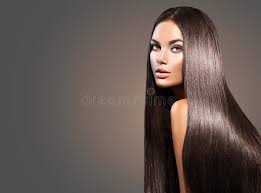- Achieving and maintaining long, healthy hair requires consistent care and attention. Here are some tips to help you grow and care for your hair:1. Maintain a Healthy Diet:
- Eat Nutrient-Rich Foods: Hair growth is supported by a diet rich in vitamins and minerals, particularly Vitamin A, Vitamin E, Vitamin C, Biotin, Iron, and Omega-3 fatty acids. Include foods like leafy greens, berries, nuts, seeds, eggs, and fatty fish (salmon).Stay Hydrated: Drink plenty of water to keep your scalp and hair hydrated. Dehydration can cause dryness and hair breakage.
- Prevent Split Ends: Regular trims (every 8–12 weeks) help remove split ends and prevent breakage, which can slow down the growth process. Maintain Healthy Ends: Even if you’re growing your hair long, trimming ensures it stays healthy and doesn’t develop damaged ends.
- Shampoo Less Frequently: Over-washing can strip your hair of natural oils, which protect and nourish it. Try washing your hair 2–3 times a week to avoid dryness. Use a Mild Shampoo: Choose sulfate-free shampoos to prevent stripping natural oils from your scalp and hair. Condition Well: Always condition after shampooing to replenish moisture and smooth the hair cuticle. Apply conditioner mainly to the ends to avoid weighing down your roots.
- Limit Heat Styling: Excessive use of hair dryers, flat irons, and curling irons can cause damage and breakage. If you must use heat, always apply a heat protectant spray before hand. Use Low Heat Settings: If you’re using styling tools, opt for the lowest heat setting that achieves the desired result to minimize damage.
- UV Protection: Just like skin, hair can be damaged by the sun’s UV rays. Use hair products that contain UV protection, or wear a hat to shield your hair from direct sunlight. Avoid Pollution: Try to protect your hair from exposure to pollutants, as these can cause dryness, buildup, and damage.
- Detangle Gently: Use a wide-toothed comb or a detangling brush to prevent breakage. Start detangling from the tips and work your way up to the roots to minimize tension. Avoid Tight Brushes: Avoid using brushes with fine bristles, as these can tug at the hair and lead to damage.
- Massage the Scalp: Gently massaging your scalp for a few minutes a day can help improve circulation and promote healthy hair growth.Use Scalp Treatments: Apply natural oils like coconut oil, argan oil, or castor oil to your scalp to nourish it and promote hair growth. Be sure to massage the oil in gently.
- Reduce Stress: Chronic stress can lead to hair loss. Practice stress-relieving activities like yoga, meditation, or deep breathing exercises.Sleep Well: Ensure you get enough sleep as it supports overall health, including hair health.
- Hydrate Regularly: Use deep conditioning treatments or hair masks once a week to replenish moisture and nutrients, especially if your hair is dry or damaged.Homemade Masks: You can make DIY masks using ingredients like avocado, honey, and olive oil to keep your hair nourished.
- Avoid Excessive Tension: Hairstyles like tight ponytails, braids, or buns can cause traction alopecia, which leads to hair breakage. Opt for loose hairstyles to avoid putting unnecessary stress on the hair.Use Hair-Friendly Accessories: Use fabric-covered hair ties or scrunchies to avoid damage, and avoid rubber bands or anything with metal parts.
- Minimize Dyes and Perms: Frequent chemical treatments like hair coloring, perming, or relaxing can weaken the hair shaft and lead to breakage. If you must color your hair, use a gentle dye and avoid over-processing.Try Natural Alternatives: Henna or plant-based dyes are gentler alternatives to chemical-based products.
- Silk Pillowcase: Cotton pillowcases can cause friction and lead to hair breakage. Switch to a silk or satin pillowcase to reduce friction and keep your hair smooth while you sleep.Silk Hair Caps: If you prefer, you can use a silk or satin hair cap or wrap to protect your hair from friction during sleep.
- Protect and Moisturize: Leave-in conditioners can provide extra moisture, protect against environmental factors, and keep your hair soft and manageable.Look for Nourishing Ingredients: Choose leave-ins with ingredients like keratin, argan oil, or aloe vera for added hydration and shine.
- Hair Grows Slowly: On average, hair grows about half an inch per month, or around 6 inches per year. So, be patient and consistent with your hair care routine.

